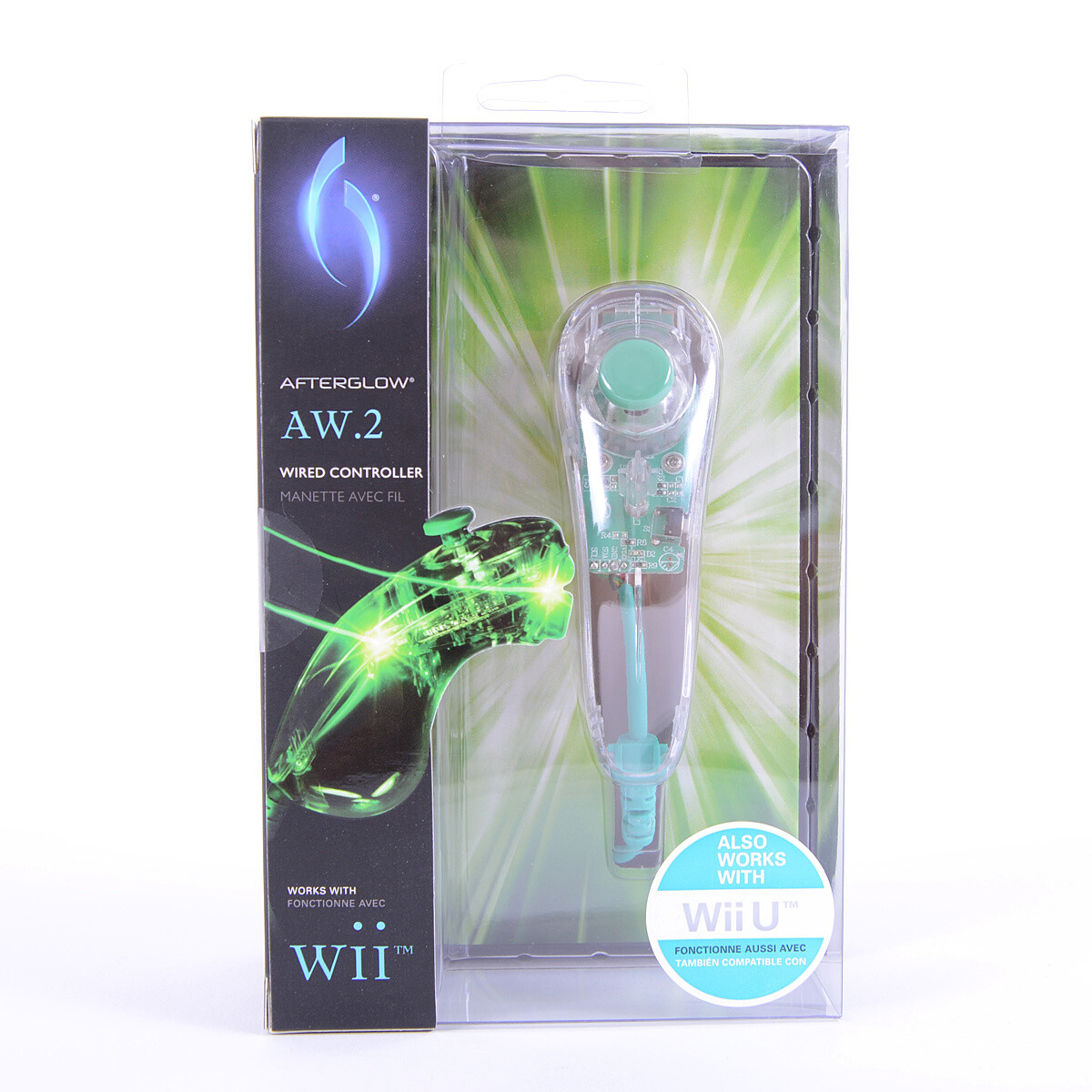

- AFTERGLOW CONTROLLER WII U HOW TO
- AFTERGLOW CONTROLLER WII U PRO
- AFTERGLOW CONTROLLER WII U BLUETOOTH
To get it to work simple pair it with "auto" selected at "pin options", if that does not work try to connect without pairing.Īfter some fiddling I realised that the controller "blacklists" hosts or something, pairing will be impossible if it have failed just once.
AFTERGLOW CONTROLLER WII U BLUETOOTH
* A compatible bluetooth adapter (seems that not ALL dongle work with Wii U Pro) * You need kernel 3.11 or newer ( maybe patches exists for prev.
AFTERGLOW CONTROLLER WII U HOW TO
Had alot of hassle with it being inverted, found no way to fix that in Steam itself.Ĭhanged the mapping in kernel module (hid-wiimote).įor those who don't know how to get it work in Linux: I think mine was identified as a Gamepad, got the badge but not 100% sure if had it earlier! :( (Ubuntu etc.) then you could have "native" support. Tried it in Windows, but don't like the solutions since you don't get analog sticks. Has anyone gotten it to work and get the badge?
AFTERGLOW CONTROLLER WII U PRO
J.R.Originally posted by Blood_Angel:Hey guys, Well I got the Wiiu Pro Controller to work with steam and play games but steam seems not to recognize it as a gamepad because eventhough I'm playing I still not getting the badge for playing in Big Picture Mode. If you are looking for a new one, and have a thing for pretty lights, definitely check this one out. Overall, the AFTERGLOW AW.1 for the Wii is a good, cheaper replacement controller. Like I said though, these few issues can be overcome and worked with. I'm not really sure why PDP felt like this needed to be less accessible for this particular controller, but it seemed an odd design choice to me. On the Wii-mote replacement though, the switch is under the battery cover and that must be removed if you want to change the setting. With the exception of the Nunchuck, the switches are on the bottom and require little to no effort to flip.

From what I've seen of the other AFTERGLOW controllers (for the PS3, 360, and the Wii Nunchuck), the buttons are all fairly easy to get to. The other main issue I have with the controller is the placement of the light switch. Granted, once you get used to the new button layout, you won't be doing that as much, but if you often switch between the AFTERGLOW and the first-party controller, you are probably going to be glancing down quite a bit. While the clear case looks great, and the lights are dazzling, it makes it very hard to read the white lettering on the buttons, especially when the lights are turned on.

The first two modes are self explanatory, while the third changes the lights based on the controller's movements and speed.ĪFTERGLOW AW.1 for the Wii has a few minor issues, but nothing insurmountable by any means. These lights can be set to either Off, On or Acceleration. The version of the AW.1 for the Wii we got in is studded with six blue LED's and through the clear plastic case, you can see the blue circuit board to match the lights. That is, of course, the lighting effects it can pull off. Now, while the button layout is important for a new controller, that isn't the AFTERGLOW's big feature. Quite frankly, there doesn't really seem to be much difference as far as ease of use is concerned, and it seems like one of the main reasons PDP wanted to move these buttons out of the way was to make room for the apparently bigger speaker. While this normally sits between the (+) and (-) buttons, PDP has moved it to the top of the controller, opposite the power button. At least this way, they are close to your left-hand-thumb instead of equally out of the way of both hands in the middle of the controller. When using the controller horizontally though, the buttons don't seem to be in any better of a location than they are on the standard Wii-mote since they are just as awkwardly placed. This makes those buttons imminently more accessible to your thumb while you are on the D-pad. Instead of being positioned between the number buttons and the D-pad, they flank the D-pad. While that change feels minor, the migration of the (+) and (-) buttons make a lot of sense. As for when you turn the controller on its side, the feel becomes slightly more akin to the button layout of a SNES controller and seems to fit the ergonomics of the thumb a bit more as the buttons line up with your thumb tip's natural arc of movement. While this appears to be purely a design change, the feel of going between the two buttons does seem slightly better when using the controller in the vertical style. The Numeric buttons are no longer centered on the controller, they are now set askew. The most noticeable relocation include the (+) and (-) buttons and the (1) and (2) buttons. AFTERGLOW AW.1 for the Wii not only rearranges the button layout for the Wii controller, but it also adds quite a bit of flair with a liberal use of LED lights, coupled with a few different modes of running those lights.įirst the button changes.


 0 kommentar(er)
0 kommentar(er)
